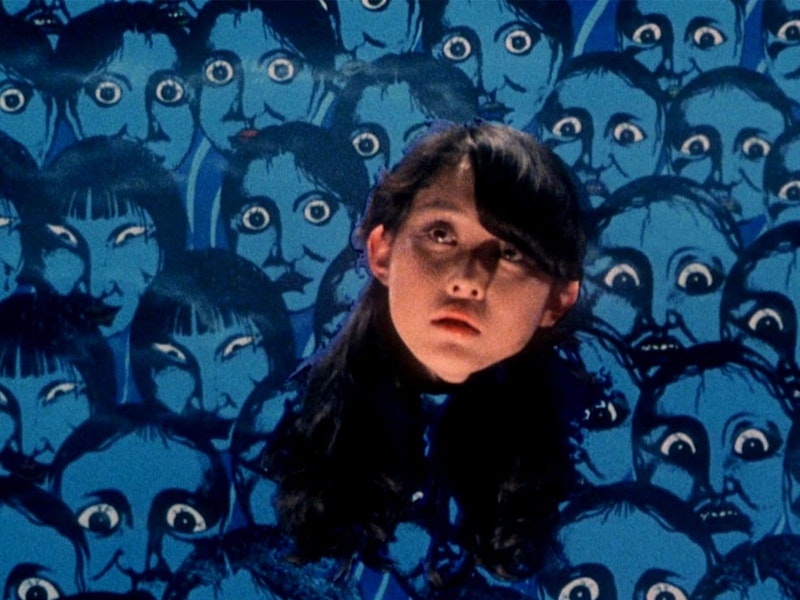I’ve gone to Revival screenings at The Charles less and less this last year. It mostly has to do with a break in routine, where my roommate and I would go every Thursday as default before we moved a little more northeast, from mid-Charles Village over to where so many neighborhoods intersect I’m not really sure which one we live in. Another aspect is the crowds. The best Revivals are the niche ones, with maybe 20 percent of seats sold to a new restoration of something you wouldn’t’ve paid too much mind to if it weren’t in Theater 1. The larger crowds are usually a bad sign, packed to the brim with MICA undergrads who don’t get out much and the worst kinds of 35-45-year-olds. I don’t have great ground to stand on as an audience member—I laugh at inappropriate times in movies and have a rather projecting laugh. I shouldn’t blame others for enjoying themselves when I’m there to do the same. Last Thursday, however, I went to the most packed Revival I’ve ever seen at The Charles, and I was primed to be in aggressive opposition to the crowd.
House (1977) is the first (and as far as most of the people at The Charles last week were concerned, the only) feature film directed by Japanese pioneer Nobuhiko Obayashi. In the 1960s, Obayashi was a founder of Film Andepandan, a group of avant-garde filmmakers who sought to give a new experimental voice to Japanese cinema. Unlike his colleagues who largely stayed on the periphery, Obayashi went on to do commercial work for the massive Japanese advertising agency Dentsu, making a name for himself behind the scenes before becoming a household name when he started making features. House was a huge hit upon its release, with its silly and, more often than not, unrelentingly sad teenage fantasia apparently grabbing domestic audiences in the 1970s, and birthing a cult for generations. While at home Obayashi was just beginning an illustrious career, abroad he’s known for little else than the movie where a magic cat unleashes the powers of a demonic house on a group of schoolgirls.
On my most recent sojourn with coronavirus I was watching at least three movies a day. One of my last projects before finally returning to work came when I realized both Rarefilmm and Internet Archive had dozens of Obayashi’s movies waiting to be rediscovered. I probably only watched five or six before finally returning to work, but I went in with a hunch completely vindicated: people who liked House would love these. It seems like a no-brainer that someone who enjoyed the supernatural shenanigans and wonky effects of House would also get a kick out of the psychic war being waged by a Venutian timelord on a student government election in School in the Crosshairs (1981). But people don’t seem interested in that, or really any of his other films, not even his seminal experimental work Emotion (1966)—which is included on Criterion release—and I think that’s because people largely aren’t engaging with House any more than they’d truly engage with the B-movies that serve as background for MST3000 riffing.
The last piece of trepidation I had going into the movie with a packed house was how sad I knew it would be, and how few people would grasp that. House, like so many of Obayashi’s films, is a lonely film about childhood. The emotional core comes from a young girl having to come to grips with how she’ll never see her mother again, and ultimately the self-destructive fantasy she’s willing to surrender herself to just to believe that she can. It’s a heartbreaking story that I missed the first time because I was watching House with the expectation of reveling in its zaniness, finding every oddity to be bafflingly hilarious rather than the unapologetically sincere work of a completely cogent craftsman. It was after watching Obayashi’s highly personal Onomichi Trilogy set in his seaside hometown—I Are You, You Am Me (1982), The Little Girl Who Conquered Time (1983), and, my favorite, Lonelyheart (1985)—that his stories about lonely children living under the impossibilities of reality with some hints of magic sprinkled in started to really gut me.
Obayashi demonstrates the kind of saccharine sentimentality that I usually deride in popular European films like Cinema Paradiso (1988) or Life is Beautiful (1997), yet his magical realism cuts through my cynicism. Obayashi’s films, even the ones I don’t particularly like, have never failed to move me. For example, I wasn’t totally hooked on The Drifting Classroom (1987), where an international school in Kobe gets taken to a distant world in a time slip and the kids have to band together to survive in their strange new land, but I’d be lying if I said that I wasn’t brought to tears by the ending. “Kids are always going someplace without telling adults,” a man tells a grieving mother, standing in the rain in front of the hole left by the old out-of-time school. She wonders if maybe they went back and are living amongst the dinosaurs. The man responds: “Children go to the future. They always do. That’s a basic rule of nature.” It’s a beautiful sentiment in the midst of total heartbreak, something Obayashi always does so well, and I wish more people could see that.

